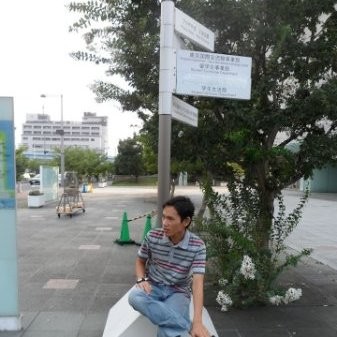Want to hire this expert for a project? Request a quote for free.
Profile Details
Create Project
USD 15 /hr
Hire Yayan M.
Indonesia
USD 15 /hr
Experienced in Aquatic Biodiversity, Aquatic ecology, Environmental Awareness, Stable isotope ecology, & Marine Biology
Profile Summary
Subject Matter Expertise
Services
Work Experience
Researcher
Conservation International Indonesia
August 2021 - Present
Lecturer
Universitas Islam Negeri Syarif Hidayatullah Jakarta
June 2010 - 2018 ![]()
Expert
Madani Multi Kreasi Consultant
June 2015 - December 2015 ![]()
Education
Magister of Science/M.Si (Marine Science)
Institut Pertanian Bogor
June 2009 - September 2012 ![]()
Undergraduated/B.Sc (Biology)
Universitas Islam Negeri Syarif Hidayatullah Jakarta
June 2003 - March 2008 ![]()
Certifications
Publications
JOURNAL ARTICLE
Akihiro Yoshikawa and Kazuho Ikeo and Junichi Imoto and Wachirah Jaingam and Lily Surayya Eka Putri and Mardiansyah and Tomoyuki Nakano and Michitaka Shimomura and Akira Asakura(2020). Colour variation of the intertidal hermit crab Clibanarius virescens considering growth stage, geographic area in the Indo–West Pacific Ocean, and molecular phylogeny . Journal of the Marine Biological Association of the United Kingdom. p. 1--15. Cambridge University Press ({CUP})
(2019). Kimia Fisik Perairan dan Ektoparasit Ikan Nila dan Patin Di Situ Gintung, Tangerang Selatan, Banten. Journal of Marine and Aquatic Sciences.
Yoshikawa, A., Ikeo, K., Imoto, J., Jaingam, W., Putri, L.S.E., Mardiansyah, Kumar, A.B., Asakura, A.(2019). Molecular phylogeny of Clibanarius Dana, 1852 from the Indo-West Pacific: Evolution of pereopod colour pattern and habitat adaptation . Crustaceana. 92. (7). p. 799-839.
(2019). Molecular phylogeny of Clibanarius Dana, 1852 from the Indo-West Pacific: evolution of pereopod colour pattern and habitat adaptation . Crustaceana.
(2018). Distribusi dan Jenis Sampah Laut serta Hubungannya terhadap Ekosistem Terumbu Karang Pulau Pramuka, Panggang, Air, dan Kotok Besar di Kepulauan Seribu Jakarta . Majalah Ilmiah Biologi Biosfera : A Scientific Journal.
Yayan Mardiansyah Assuyuti, Alfan Farhan Rijaluddin, Firdaus Ramadhan, Reza Bayu Zikrillah, Dwi Cahya Kusuma(2017). STRUKTUR KOMUNITAS DAN DISTRIBUSI TEMPORAL GASTROPODA DI DANAU SITU GINTUNG, TANGERANG SELATAN, BANTEN . Scripta Biologica. 4. (3). p. 139. Program Pascasarjana Universitas Jenderal Soedirman
(2017). Kualitas Perairan pada Bulan Ramadan di Situ Gintung, Tangerang Selatan, Banten . Jurnal Biodjati.
Putri, L.S.E., Dasumiati, Kristiyanto, Mardiansyah, Malik, C., Leuvinadrie, L.P., Mulyono, E.A.(2016). Ethnobotanical study of herbal medicine in Ranggawulung Urban Forest, Subang District, West Java, Indonesia . Biodiversitas. 17. (1). p. 172-176.
Wardiatno, Y., Mardiansyah, Prartono, T., Tsuchiya, M.(2015). Possible food sources of macrozoobenthos in the manko mangrove ecosystem, Okinawa (Japan): A stable isotope analysis approach . Tropical Life Sciences Research. 26. (1). p. 53-65.
(2013). KOMPOSISI ISOTOP STABIL DAN TROFIK LEVEL KERANG KIPAS (Pectenidae-Chlamydinae sp.) DAN PRODUSEN PRIMER DI PULAU PARI, KEPULAUAN SERIBU, DKI JAKARTA . Al-Kauniyah Journal of Biology.

